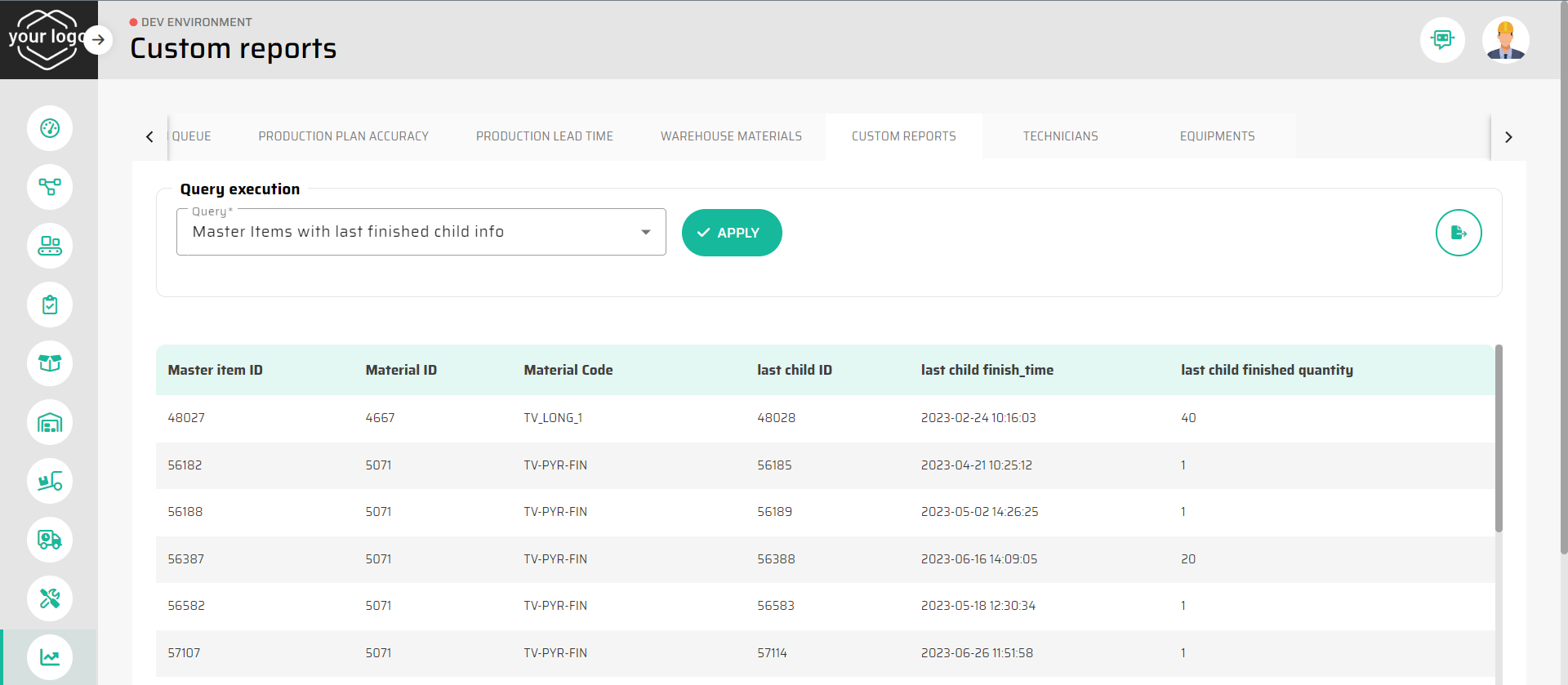Custom Reports
The Custom Report feature allows users to generate tailored reports based on predefined SQL scripts. This powerful tool enables users to create and run reports that meet specific needs, leveraging the data stored in the application database. The flexibility of this feature is limited only by the data available, the SQL language, and the skills of the user creating the reports.

Report Execution
Select Report: Use the dropdown menu to choose the desired report from the list of available custom reports. These reports are defined by SQL scripts prepared in the Parametrization section.
Apply Filters: Click the "APPLY" button to generate the report based on the selected criteria.
Report Layout
The generated report will display a table with columns and data defined by the selected SQL script. The structure and content of the table will vary depending on the specific report chosen.
Exporting the Report
To export the report, click the "Export" button located at the top right of the table. The report can be downloaded as a CSV file, allowing for offline use and further analysis.
Customization and Flexibility
The number and complexity of custom reports are only limited by:
Data Availability: The data stored in the application database.
SQL Language: The capabilities and limitations of SQL.
User Skills: The proficiency of the user in writing and optimizing SQL queries.
Creating Custom Reports
Custom reports are created and managed through the Parametrization section, where users with the appropriate skills can define new SQL scripts to meet specific reporting needs. This allows for highly tailored reports that can adapt to various business requirements and data analysis tasks.
Tips for Effective Custom Reporting
Understand Your Data: Ensure you have a good understanding of the database schema and available data.
Optimize Queries: Write efficient SQL queries to improve report generation time.
Test Reports: Validate the accuracy of your reports by testing them with various data sets.
Use Clear Naming: Give your custom reports clear and descriptive names to make them easily identifiable.
